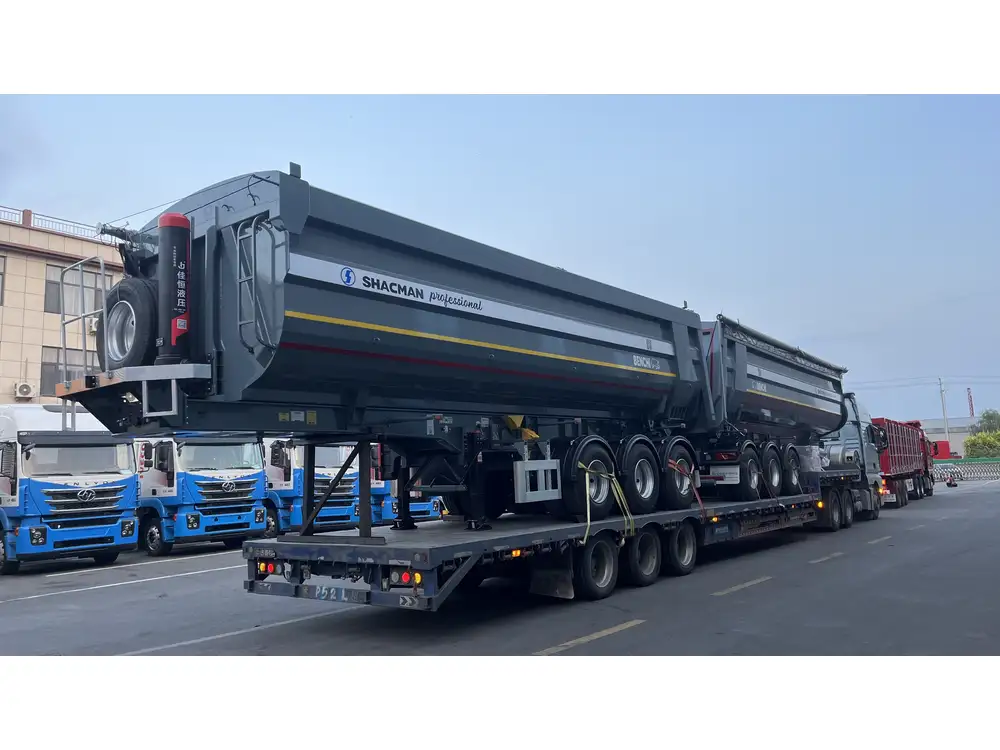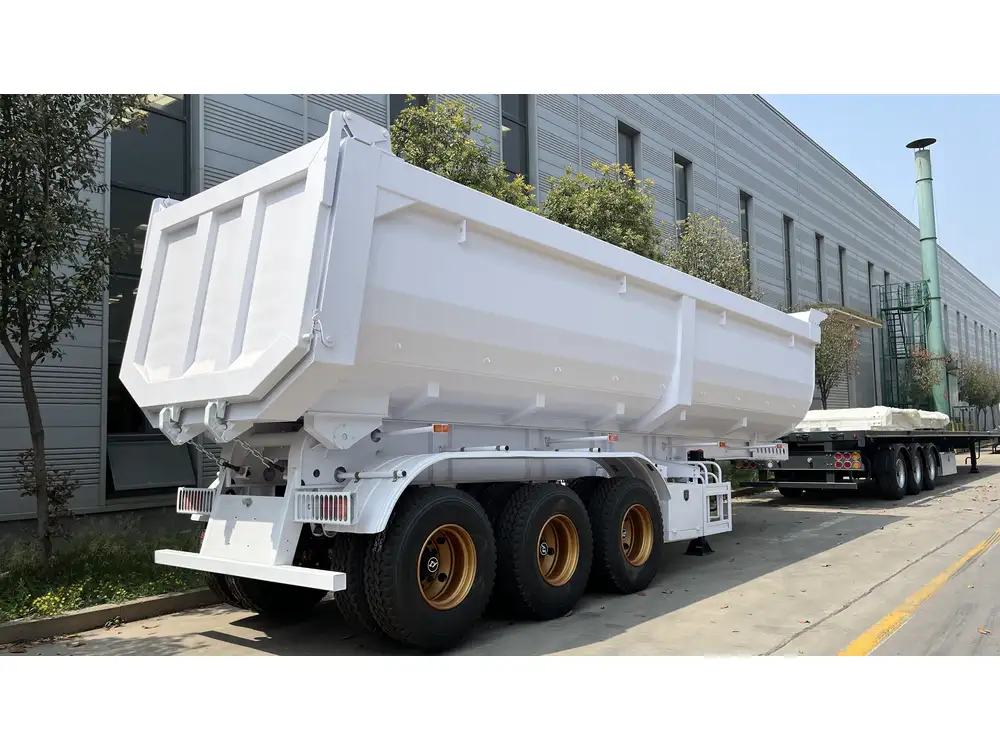When it comes to the logistics and transportation industry, the tractor trailer stands as a vital component of goods movement across vast distances. While the trailer portion is crucial for maximizing cargo capacity, the overall dimensions of a tractor trailer dictate the vehicle’s functionality, compliance with regulations, and suitability for varied transport tasks. This guide will delve deeply into the standard dimensions of tractor trailers, their implications, and considerations for usage.
Table of Contents
- Standard Dimensions of a Tractor Trailer
- 1.1 Length
- 1.2 Width
- 1.3 Height
- 1.4 Weight Limitations
- Types of Tractor Trailers and Their Dimensions
- 2.1 Flatbed Trailers
- 2.2 Dry Van Trailers
- 2.3 Refrigerated Trailers
- 2.4 Specialty Trailers
- Regulatory Considerations for Dimensions
- 3.1 Federal Standards
- 3.2 State Variations
- Future Trends in Tractor Trailer Design
- Choosing the Right Dimensions for Your Needs
- Conclusion
1. Standard Dimensions of a Tractor Trailer
The word “dimensions” encompasses various measurements significant for operational efficiency. Let us dissect the primary dimensions of a tractor trailer.

1.1 Length
The average length of a standard tractor trailer, combining the tractor and trailer, ranges from 70 to 80 feet (approximately 21 to 24 meters). This length is crucial as it influences maneuverability, particularly when navigating urban environments or tight spaces.
| Dimension | Measurement |
|---|---|
| Standard Length | 70-80 ft (21-24 m) |
| Maximum Length | 53 ft (16.15 m) for trailers due to federal standards |
1.2 Width
The width of a tractor trailer is generally 8.5 feet (2.6 meters). This width is essential for compliance with most state regulations regarding road usage. Wider vehicles may encounter limitations on certain routes, thus impacting delivery schedules.
| Dimension | Measurement |
|---|---|
| Standard Width | 8.5 ft (2.6 m) |
| Legal Maximum | Varies by state; usually up to 102 inches |
1.3 Height
Height can affect the accessibility of overpasses and low-clearance areas. A typical tractor trailer stands at 13.5 feet (4.1 meters) high. However, this can vary based on the cargo type, particularly in the case of specialized trailers.
| Dimension | Measurement |
|---|---|
| Standard Height | 13.5 ft (4.1 m) |
| Maximum Height | Variations exist; always verify route limitations |

1.4 Weight Limitations
Apart from dimensions, weight restrictions are paramount. The Gross Vehicle Weight Rating (GVWR) for a standard tractor trailer typically caps at 80,000 pounds (approximately 36,287 kg), including the weight of the tractor and the trailer. Each trailer type has its own payload capacity, which must be considered to avoid legal issues and ensure safe operations.
| Weight Capacity | Measurement |
|---|---|
| Maximum Gross Weight | 80,000 lbs (36,287 kg) |
| Average Payload Capacity | Varies by trailer type |
2. Types of Tractor Trailers and Their Dimensions
The dimensions of tractor trailers can vary significantly based on the type of trailer attached. Let’s explore some common trailer types and their respective dimensions.
2.1 Flatbed Trailers
Flatbed trailers are often used for heavy loads that can be easily loaded and unloaded from the top or sides. The typical length of a flatbed trailer is 48 to 53 feet.

2.2 Dry Van Trailers
The dry van trailer, widely utilized for transporting non-perishable goods, adheres to standard dimensions of 53 feet in length and 8.5 feet in width.
2.3 Refrigerated Trailers
Refrigerated or reefer trailers hold necessities for transporting temperature-sensitive items. The standard dimensions align with dry vans, typically at 53 feet long and 8.5 feet wide.
2.4 Specialty Trailers
Specialty trailers include lowboys for hauling heavy equipment and tankers for liquids. Dimensions vary significantly depending on the goods transported and requirements.
| Trailer Type | Length | Width | Typical Height |
|---|---|---|---|
| Flatbed Trailers | 48-53 ft | 8.5 ft | Varies |
| Dry Van Trailers | 53 ft | 8.5 ft | 13.5 ft |
| Refrigerated Trailers | 53 ft | 8.5 ft | 13.5 ft |
| Specialty Trailers | Varies | Varies | Varies |

3. Regulatory Considerations for Dimensions
Navigating the regulatory landscape governing tractor trailer dimensions is crucial for fleet operators and drivers.
3.1 Federal Standards
The Federal Highway Administration imposes maximum dimensions for trucks on interstate highways. These regulations ensure uniformity and safety across states. Any deviations could lead to fines or hazards on the road.
3.2 State Variations
States may impose stricter regulations than federal standards. Specific routes may have individual protocols to comply with local logistics challenges. Operators must check routing regulations to remain compliant, particularly in states known for congested urban traffic or narrow highways.

4. Future Trends in Tractor Trailer Design
The evolution of tractor trailer design is constantly influenced by technology, environmental standards, and market demands. Some trends to watch include:
- Eco-Friendly Trailers: Innovations in materials to reduce weight and improve fuel efficiency.
- Smart Trailers: Integration of technology for real-time tracking, improved safety features, and data analytics.
- Automated Systems: Emerging joysticks and automation in loading and unloading processes are anticipated to change how trailers operate.
These trends highlight the growing importance of sustainability and technology in the transportation sector, paving the way for a new era of logistics efficiency.
5. Choosing the Right Dimensions for Your Needs
Selecting the appropriate tractor trailer dimensions requires analyzing the specific needs of your operation. Here are some critical considerations:
- Cargo Type: Understand the weight and space requirements of your goods.
- Delivery Routes: Analyze the routes you’ll be traversing, including weight and height restrictions.
- Compliance Needs: Ensure adherence to both federal and state regulations to avoid penalties.
By assessing these factors methodically, fleet operators can optimize their choice of tractor trailer dimensions.
| Consideration | Action |
|---|---|
| Cargo Type | Analyze requirements |
| Delivery Routes | Assess restrictions |
| Compliance Needs | Review regulations |
6. Conclusion
In summary, understanding the dimensions of a tractor trailer transcends mere numbers; it’s about maximizing efficiency, ensuring compliance, and guaranteeing operational safety. Each measurement—length, width, height, and weight—holds distinct implications for logistics and transport strategy. As we advance into a more complex and rapidly evolving transportation landscape, keeping abreast of regulations, trends, and best practices becomes paramount for success in the industry.
Equip yourself with the knowledge gained in this guide, and make informed decisions that will enhance your transport operations, ensuring you remain competitive in the ever-demanding logistics arena. Transitioning towards more compliant, efficient, and innovative trailer solutions will inevitably bolster business growth and customer satisfaction.



